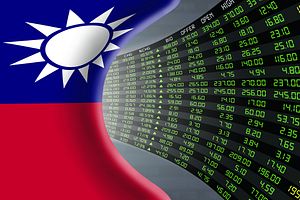Taiwan’s Ministry of Finance announced on Tuesday that the country’s exports saw a 9.6 percent decline in May, compared to a record-high base last year, the gap having widened after a 6.5 percent decline in April.
The 9.6 percent fall was slightly better than Bloomberg’s consensus estimate of 9.9 percent, but exports have been on the decline for 16 months straight – a new record after the 14 month decline seen during the global financial crisis in 2008.
Taiwan’s outbound shipments are expected to continue their decline until technology giants throughout the world announce the launch of new-generation gadgets, something that would trigger demand, said the Ministry of Finance.
The weakness was broad-based, affecting regions and products at the same time, said HSBC economist Jing Li, in a statement seen by The Diplomat. According to HSBC, both actual report orders and the new export orders sub index of the manufacturing PMI point to a similar trend in decline, which also hints at another stretch of tough times looming ahead.
Despite of the fall, exports are seen to have stabilized somewhat in May, according to Christie Chien, an analyst at Daiwa Capital Markets, in a statement seen by The Diplomat. Exports to the EU have shown slight growth, rising from 0.8 percent in April to 2.9 percent in May, compared to a year ago. Chien also pointed out that the stabilization was true in various product sectors as well.
Although the demand for plastic and chemical products remains weak, the government has announced that shipments of semiconductors found some support in May, and the rate of decline in shipments in electronic products has seen an obvious improvement, going from 3.4 percent in April to 2.1 percent in May.
Chien’s optimism was reflected in Department of Statistics Director-General Yeh Maan-tzwu’s (葉滿足) remarks to the press this week. “The worst is over regarding the continuous drop, but there is an obvious pickup in capital equipment and also electronic parts imports,” said Yeh.
The only product category that did not see yet another bout of decline this year is container ships, having managed to rise 1.1 percent compared to a year ago, said Yeh.
Amid another month of decline in exports, the improvement in imports was extremely surprising, said Li of HSBC. Imports had contracted at the slowest pace in January 2015. This is mainly due to “improved demand for machinery and electronic equipment,” said Li in a company statement.
It should, however, be noted that in the wake of newly inaugurated President Tsai Ing-wen’s “New Southbound Policy,” shipments to China have dropped 10.2 percent annually. Shipments to ASEAN nations including the Philippines and Indonesia also show a 13.1 percent decline.
The drop could be a potential threat to Tsai’s new policy to steady trade relations with China and ASEAN countries south of Taiwan.
































